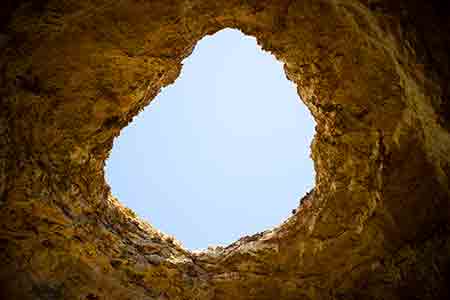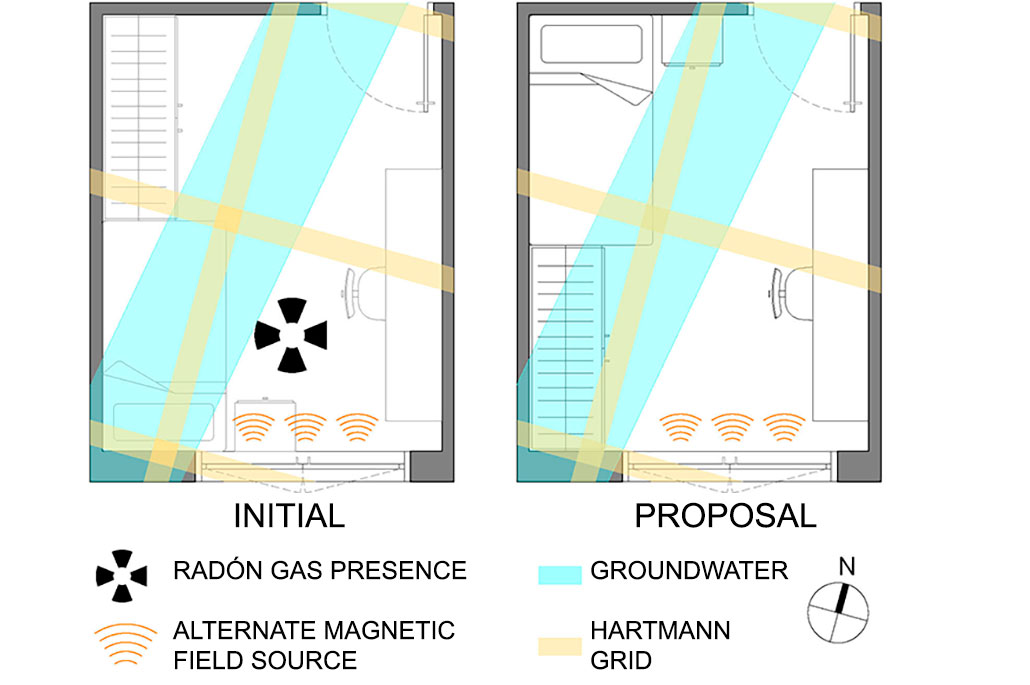Rambla Salvador Samà, 47
Vilanova i la Geltrú – Barcelona – Spain
CONTACT FORM

Throughout history, most civilizations have observed that the place where we live has an influence on people’s health.
Today, geobiology combines knowledge from our ancestors with state-of-the-art research conducted by geologists, engineers, physicians and other researchers. It locates the places of greatest permanence in spaces with low levels of natural radiation and helps us to live in a healthy home.
Geobiology studies the relationship between the earth (GEA) and living beings (BIOS). It deals with the biological effects that terrestral geology has on people.
This study of the environment has come to us since ancient times. Historically, civilizations relied on the observation of nature to establish where they settled and which places to avoid.
In our culture, these spaces to avoid are known as geopathic stress.
Geopathic stress refers to places where high concentrations of naturally occurring radiation are concentrated. and coming from the subsoil.
The long stay of people in spaces with excess radiation can lead to the appearance of symptoms and diseases. These symptoms may be more frequent in those cases where the bed or workplace is located right on the vertical of geopathic stress.
Groundwater circulates through subway galleries and aquifers. The water cycle itself is beneficial for life, but it has effects on the earth’s surface, where we live. Its friction with the environment attracts natural terrestrial radioactivity, decreases the earth’s magnetic field and alters the ionization of surface air.
The most common effects on people who sleep vertically in the groundwater are insomnia disorders. In general, the body is weakened and the recovery process from illness also suffers.
Faults or fissures in the ground are discontinuities or fractures in the rocks. In the civilized environment they are always covered up and hidden from human view.
This rupture facilitates the outflow of natural radiation to the surface, especially in the form of gamma rays and the radioactive gas radon.
This excess radiation can cause nervousness, irritability, hyperactivity or even help to develop cancer.
A ground cavity is a hollow space that is hidden underground.
They have the ability to alter the Earth’s magnetic field vertically and are often filled with gases or liquids.
Their effect on people are highly variable depending on the gases or liquids contained in the underground cavity.
If they are filled with water, their effects are similar to those of groundwater.

The German Doctor Ernst Hartmann discovered in the middle of the 20th century a grid that extends over the entire planet and related to the Earth’s magnetic field.
They are parallel straight lines that are separated by about 2.5m in the east-west direction and about 2m in the north-south direction. Between line and line, there is the neutral zone.
Dr. Hartmann related the crossing points of this grid to tremors, ramps and sleep pathologies.
It is a radioactive noble gas naturally found in soil, especially granitic soil. It seeps through building materials that are in contact with the ground and concentrates in the enclosures that they delimit, especially those located in the lower floors and basements.
It is the second most important cause of lung cancer. It is also associated with other diseases, such as stomach cancer and brain cancer in women.
The mineral composition of the soil beneath our buildings may contain clays or minerals with radioactive elements such as uranium, thorium or radium. Then, building materials using granite, basalt or concretes with fly ash also emit higher radioactivity.
Continuous low doses of radioactivity over time are sufficient to increase long-term risks, such as cancer or brain damage to the foetus.
Nowadays, radiation from the ground is added to the artificial radiation caused by human beings due to technological, social and occupational development. The radiation that the human organism must withstand has never been so high.
In these circumstances, geobiology has seen the need to update and incorporate the analysis of electromagnetic radiation.
Electric fields are produced by the potential difference. They constitute the area of space where the intensity of an electric force appears.
They act on people in such a way that the field strengths can redistribute the charges of the different organs of the body, generating parasitic body currents that can disturb the fundamental biological processes of the human body.
The alternating magnetic field appears at the moment electricity is consumed. It constitutes a magnetic force around the space through which electrons move.
They act on the human body through the induction effect. They are more penetrating than electric fields and their potential ability to affect fundamental biological processes is greater.
They are radiations that are transmitted wirelessly through the air transporting energy from one place to another. They are mainly used to transmit information.
The European Academy of Environmental Medicine identifies long-term exposure with common symptoms such as concentration difficulties, depression, fatigue, sleep problems and more serious illnesses.
A home with low levels of harmful radiation prevents symptoms: insomnia, depression, fatigue, headaches, infertility and, in general, loss of well-being.
The Geobiological Study of a home identifies and evaluates the natural radiation and electromagnetic radiation in the spaces where people spend most time, such as bedrooms and study or work places, and proposes actions to create a low-radiation space that provides well-being and vitality.

Rambla Salvador Samà, 47
Vilanova i la Geltrú – Barcelona – Spain

2025 © Copyright - Carles Surià